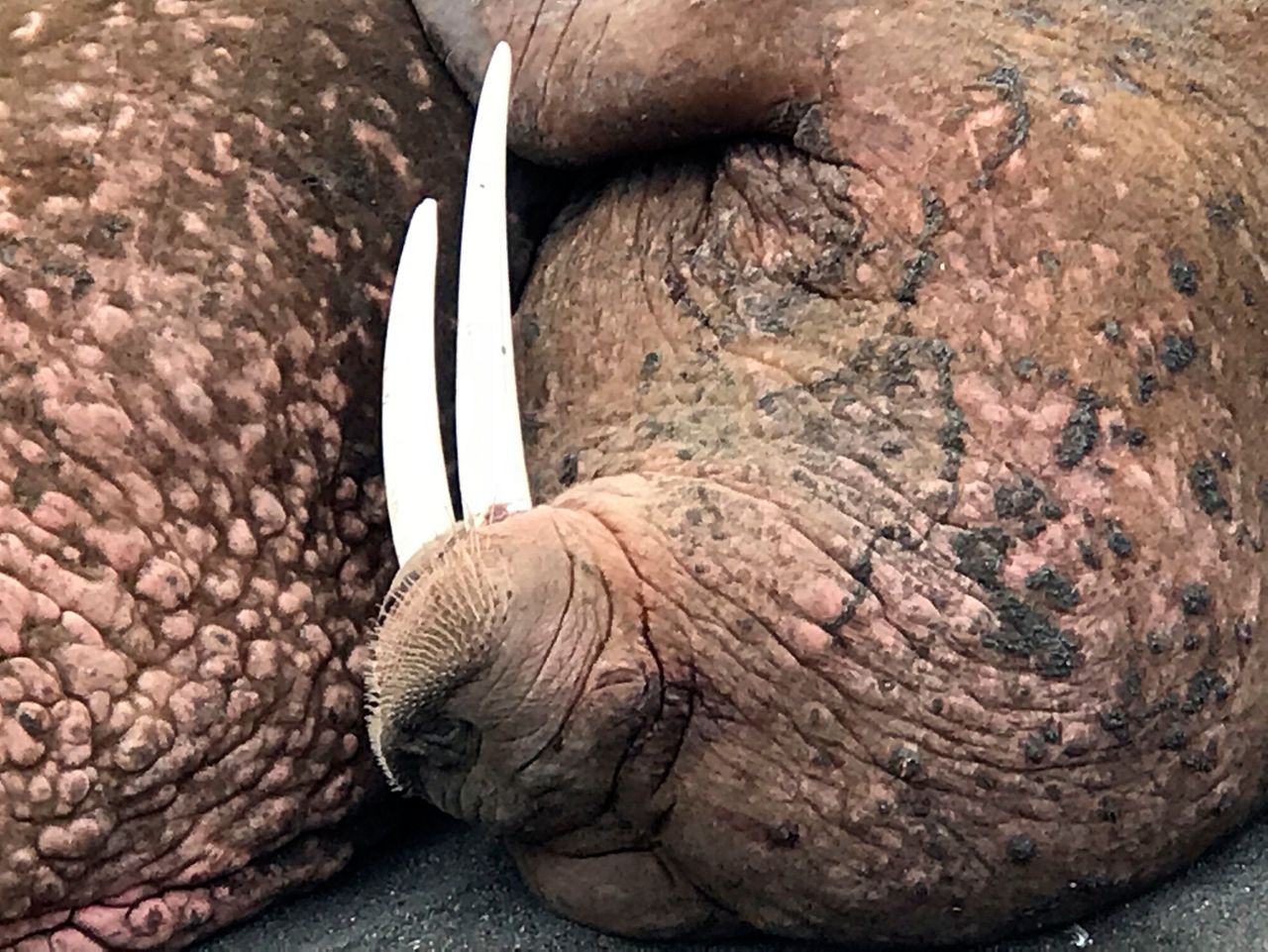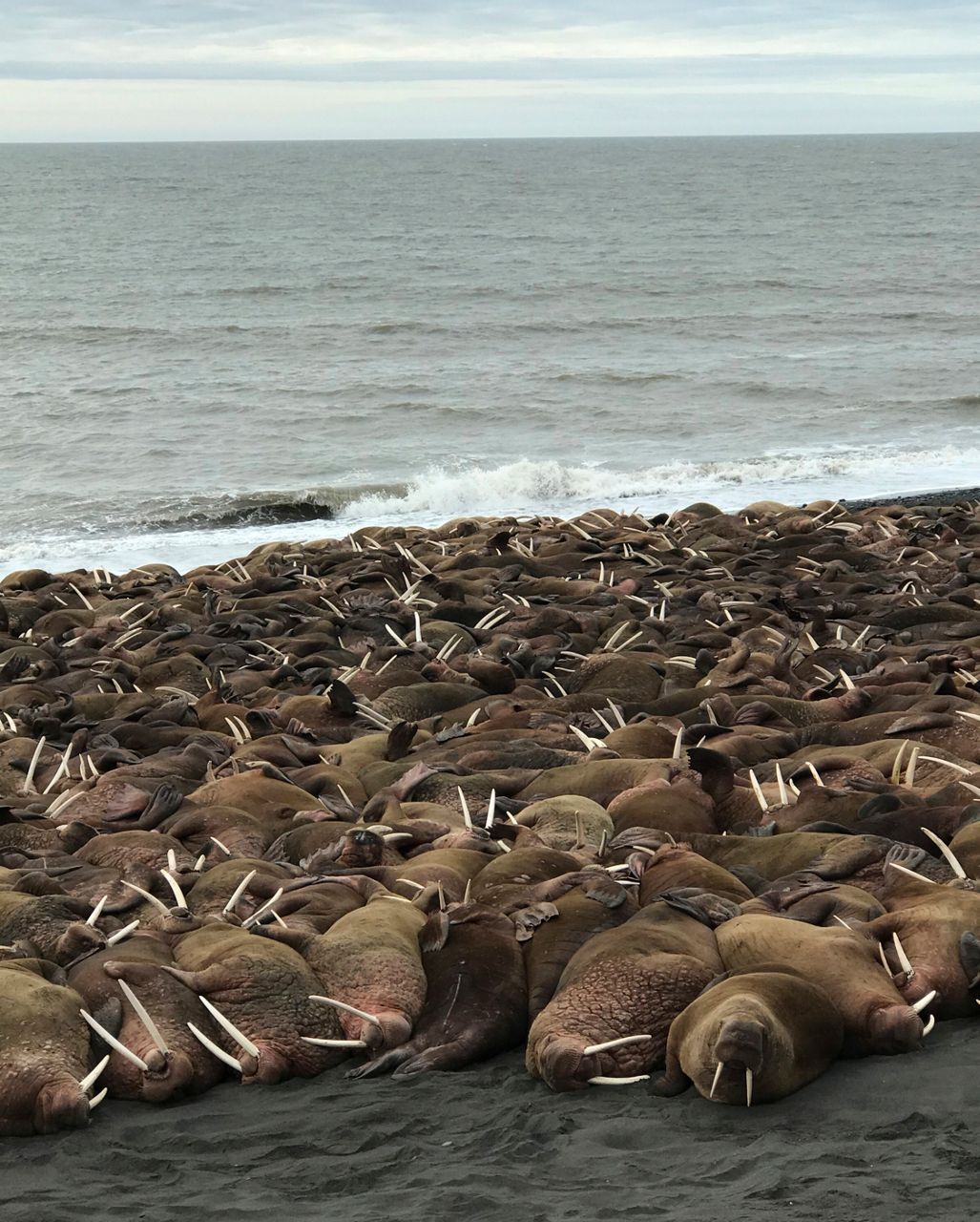ANCHORAGE, Alaska (AP) — Residents of a village of 110 on the Alaska Peninsula see the occasional walrus in Bering Sea waters, but when 200 packed a beach just outside the community, it took them by surprise.
Port Heiden's Tribal Council President John Christensen, Jr. was on a beach ride with four-wheelers April 7 and smelled something foul, he said Wednesday.
"We thought something was dead, so we were looking for dead sea otters or seals on the beach so we could report them to the LEO (Local Environmental Observer) Network," he said.
He followed his nose for a couple of miles and was startled to see a beach crowded with walruses.
"We were wondering what those white things in the sky were," he said. "You could see their tusks in the air. When we got closer, we could see their bodies."
Two weeks later, Christensen saw more than a thousand walruses gathered about 20 miles (32 kilometers) outside the village.
Joel Garlich-Miller, a U.S. Fish and Wildlife Service biologist with a focus on walruses, is not sure why they are gathering on the Alaska Peninsula, the land mass that juts from mainland Alaska toward the Aleutian Islands, but it may be related to food availability.
Male and female walruses spend winters in the Bering Sea but separate when ice recedes with warmer temperatures.
Females and their calves ride the sea ice north all the way through the Bering Strait into the Chukchi Sea, using ice as a platform to dive for clams and other mollusks and rest.
Male walruses traditionally spend summers in the Bering Sea, often on islands or remote locations in Bristol Bay roughly 130 miles (209 kilometers) north of Port Heiden, Garlich-Miller said.
In the late 1980s, as many as 10,000 walruses would gather on Round Island, part of a state wildlife sanctuary. In recent years, however, only 2,000 to 3,000 show up on Round Island, Garlich-Miller said.
That could be an effect of sea ice not forming as far south as in past years and male walruses spending more time in the northern Bering Sea, he said.
However, big bull walruses regularly go on foraging trips of five to seven days before "hauling out" to rest on land and may be spreading out to find better areas for diving, he said.
"They are trying to optimize their foraging," he said. "One can imagine these many thousands of animals can probably put a hurt on some of the benthic resources they're targeting."
A chief concern for the agency is keeping walruses safe in the resting areas.
Noisy approaches by people can startle herds, sending walruses stampeding into water, which can crush and kill vulnerable animals. Frequent disturbances also can drive walruses away from preferred resting areas, Garlich-Miller said, causing them to expend more energy foraging and affecting their overall body conditions.
Copyright 2018 The Associated Press. All rights reserved. This material may not be published, broadcast, rewritten or redistributed.




